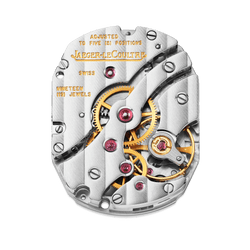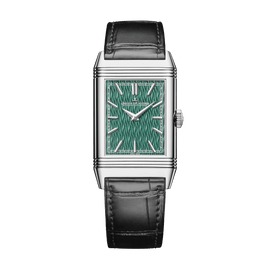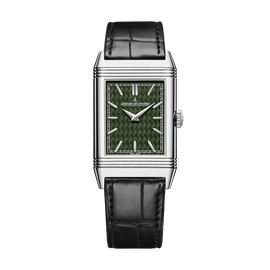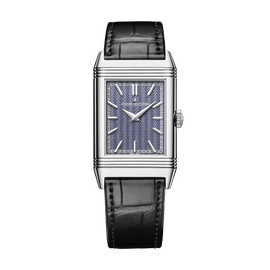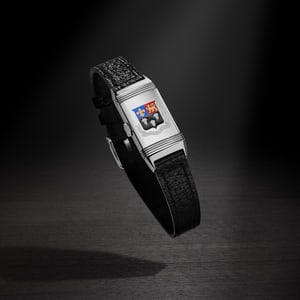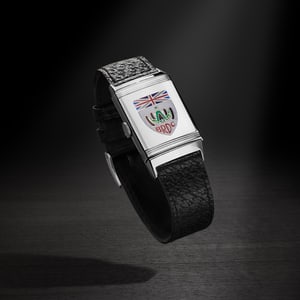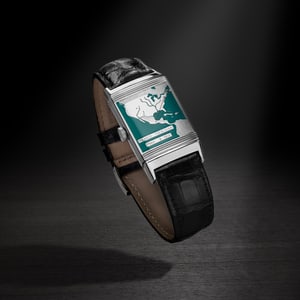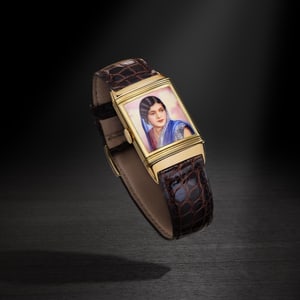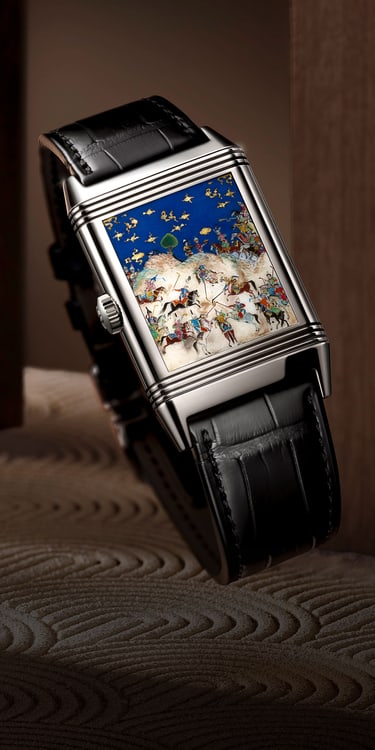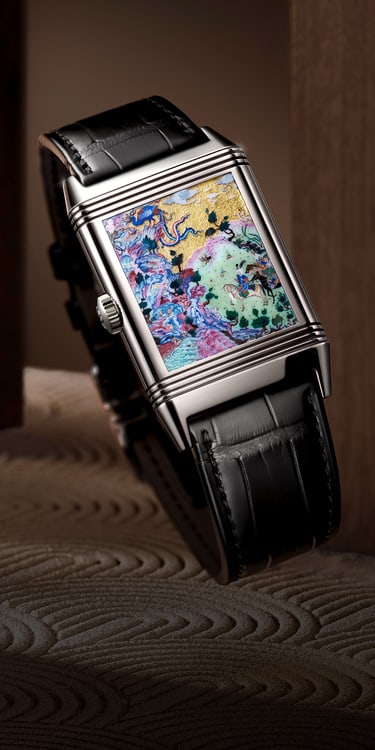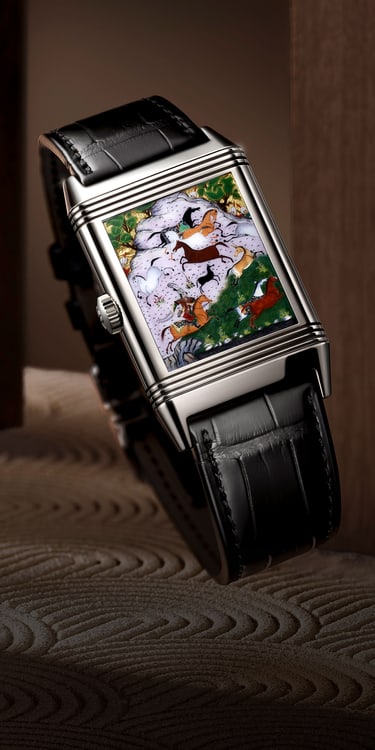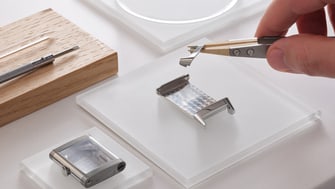Reverso Tribute
Faridun tests his sons
Reverso Tribute
Faridun tests his sons
Color and material variants
CRAFTSMANSHIP
100 HOURS OF MINIATURE PAINTING & PAILLONNAGE
The first challenge was to miniaturise the original works and reproduce them on a surface of 2 cm2. The enamel paintings are further elevated by the craft of paillonnage, in which tiny pieces of fine gold leaf (24k, 999/1000) are cut to precisely the shape and size of the desired motif. The paillons are then positioned by hand on the surface to be enamelled. This highly skilled work requires 100 hours for each case back.

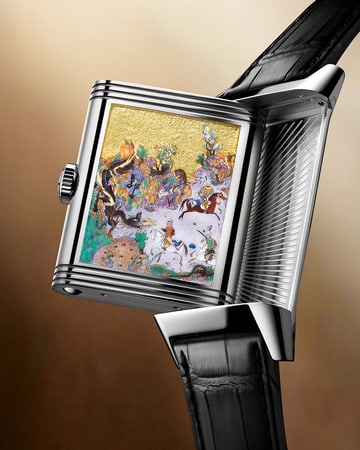
GUILLOCHÉ ENAMELLED DIAL
The dial is adorned with an intricate herringbone guilloché pattern, consisting of 120 lines, lying beneath a layer of translucent light-blue grand feu enamel, harmonising with the colour of the landscape depicted in the painting. The hand-guilloché base is executed on a 100-year-old hand operated lathe. The simplicity of the Reverso Tribute design codes places full value on the beauty of the guilloché pattern and the rich colour of the enamel.
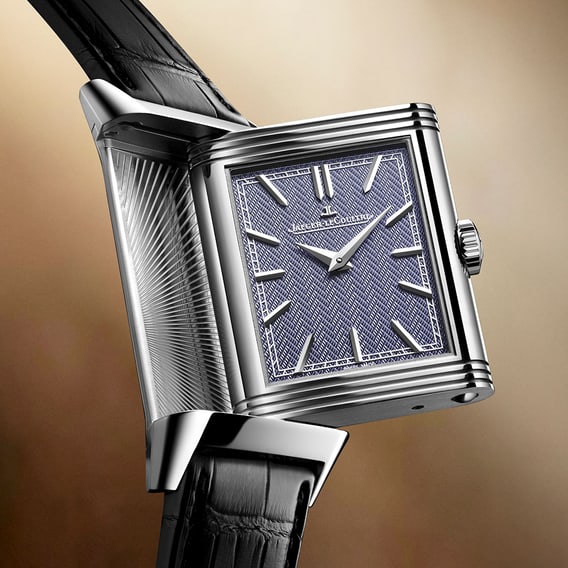
ART STORY
AN HOMAGE TO MINIATURE PAINTING
In tribute to miniature painting, which originated in Persia, each piece features a miniature reproduction of an illustration of the Shahnameh of Shah Tahmasp. These timepieces tell a story within a story – capturing the essence of the Polo game and paying homage to the game’s Persian origins through miniature enamel painting.
SHAHNAMEH OF SHAH TAHMASP
One of the most magnificent editions of the Shahnameh is the copy dedicated to Shah Tahmasp, containing 258 illustrations – each considered a masterpiece of Persian miniature painting. This edition was presented in 1568 to the Ottoman sultan Selim II and held at the Topkapi Palace. In the 1970s, its bound manuscript was broken up, and its folios are now dispersed among museums and private collections worldwide.
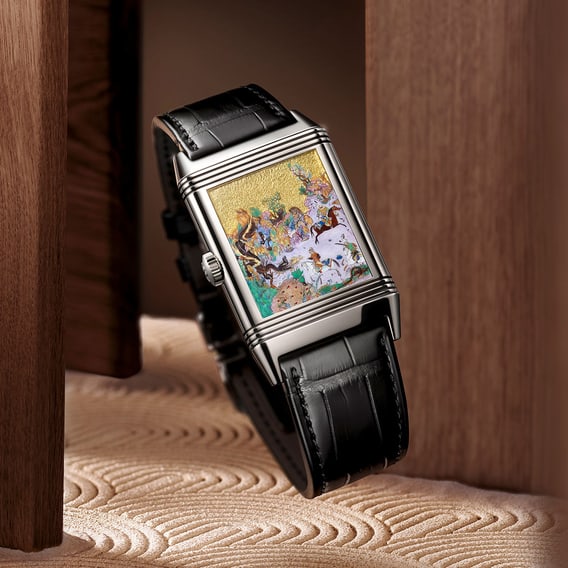
FARIDUN IN THE GUISE OF A DRAGON TESTS HIS SONS
The Persian King Faridun transformed himself into an azhdaha – a mythical dragon – to secretly gauge the characters of his three sons. When confronted with the fire-breathing monster, the first one fled, the second prepared to fight, and the third remained calm, demonstrating the wisdom and bravery needed to rule. The scene depicted in the painting symbolises the virtues of leadership and filial loyalty in Persian culture.
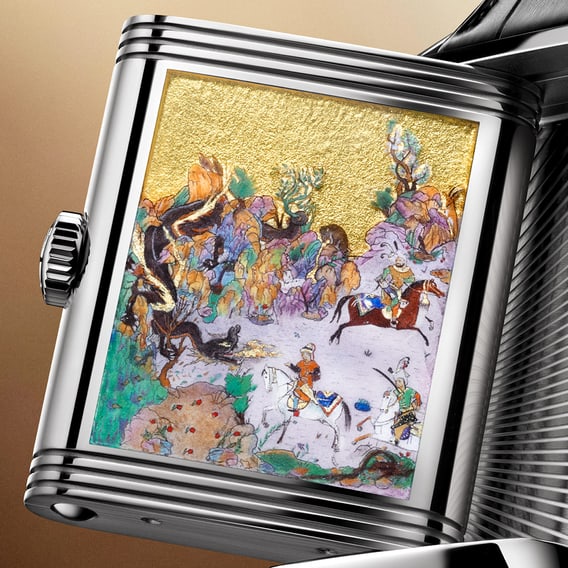
CALIBRE
A RECTANGULAR HEART
The manually wound calibre 822 that drives the Reverso Tribute Enamel Shahnameh watch is the epitome of Jaeger-LeCoultre’s philosophy. Entirely designed, produced and assembled in-house, calibre 822 is an uncommon rectangular movement allowing it to fit in the Reverso watch case.
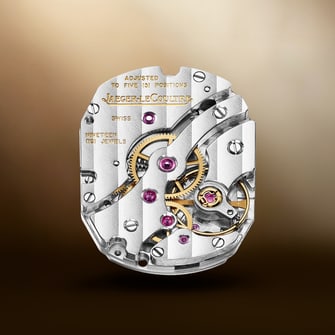
Calibre
HERITAGE
THE BIRTH OF AN ICON
In 1931, Jaeger-LeCoultre launched a watch that was destined to become a classic of 20th-century design: the Reverso. As an object that so deftly synthesised form and function, it has become one of the most recognisable watches of all time, looking as fresh and modern today as when it first appeared.
While its blank metal flip side had begun as a purely functional solution to avoid damage to the dial, it was an ideal surface for personalisation with monograms, emblems or personal messages using lacquer, engraving, enamel or gemstones. The Jaeger-LeCoultre museum showcases exceptional examples of this craftsmanship, including the 1936 Reverso ‘Indian Beauty’.
COLLECTION
Being the perfect canvas for artistic expression, personalisation has been at the core of Reverso watch since its creation. With 180 skills under one roof, the Atelier des Métiers Rares™ of Jaeger-LeCoultre is the perfect place to bring personalisation to life.
